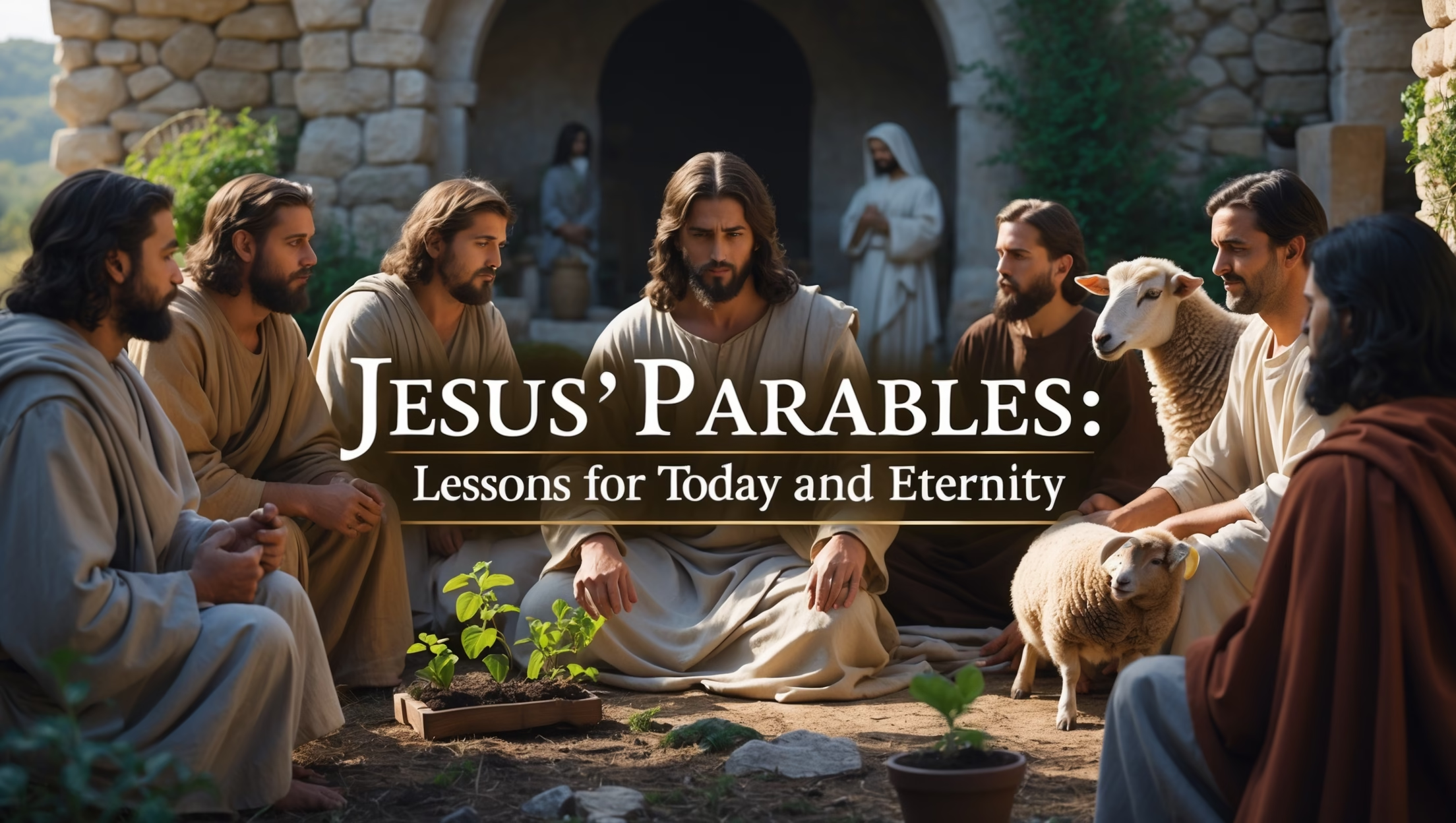Jesus spoke more in parables than in direct sermons—over forty memorable stories about seeds, sheep, and surprising grace. These deceptively simple tales have captivated readers for centuries, but why did the Master Teacher choose this cryptic approach? What revolutionary truths lay hidden beneath the surface of these stories? Understanding Jesus’ parables requires examining their cultural, historical, and theological context, revealing wisdom designed to challenge, provoke, and transform.

The Scandal of Indirect Teaching
In Matthew 13:10-17, the disciples ask Jesus why He teaches in parables. His startling response: “To you it has been given to know the secrets of the kingdom… but to them it has not been given.” This was not an exercise in elitism; it reflected an ancient practice in Jewish wisdom literature of concealing profound truths from casual or hostile listeners while revealing them to attentive seekers.
Parables functioned in multiple ways: they concealed truth from hardened hearts, revealed mysteries to those willing to ponder deeply, and disarmed cultural or religious defenses by embedding radical ideas in familiar narratives. Isaiah 6:9-10 similarly portrays God’s word as something that “hardens hearts” to some while opening the minds of others, highlighting the paradoxical power of indirect teaching.
Historical and Cultural Context of Parables
Storytelling in first-century Judea was immersive and performative. Teachers used familiar images—farms, vineyards, meals, families—to engage listeners, drawing them into the narrative world. In a largely oral culture, these stories were easy to remember and repeat, yet they carried subversive messages. Parables were also protective: they could spread transformative ideas without provoking immediate retaliation from authorities, while those who truly “had ears to hear” could discern the Kingdom of God at work.
Three Earth-Shaking Parables and Their Hidden Depths
The Prodigal Son (Luke 15:11-32)
On the surface, this is a story about a wayward son returning to his father. Beneath the narrative, it communicates revolutionary theology: God’s love transcends meritocracy and human judgment. The father runs to embrace both the self-righteous elder brother and the scandalous younger brother, illustrating that divine grace does not favor the religiously “good” over the socially marginalized. For first-century listeners, this would have upended conventional ideas about reward, punishment, and divine favor.
The Good Samaritan (Luke 10:25-37)
The story seems simple: help your neighbor. Yet Jesus redefines “neighbor” by making a despised Samaritan the hero while implicitly criticizing religious leaders who passed by the wounded man. In a society steeped in ethnic and religious divisions, this tale challenged listeners to transcend ingrained prejudices, expanding the ethical boundaries of love and compassion.
The Mustard Seed (Mark 4:30-32)
On its surface, this parable describes a tiny seed growing into a large plant. Symbolically, it conveys that God’s Kingdom often begins insignificantly, even scandalously—as with the crucified Messiah—yet will expand to provide refuge, nourishment, and influence far beyond expectations. The small and vulnerable become central, a recurring theme in Jesus’ teaching.
Why Parables Are Often Misread Today
Modern readers often reduce parables to moral fables or rigid allegories where every detail carries symbolic meaning. Jesus’ original listeners experienced them as subversive, performative narratives. The parables started with familiar, everyday scenes but took unexpected, shocking turns, leaving the audience implicated. A wealthy landowner could see himself as the greedy vineyard tenant; a pious Pharisee might recognize self-righteousness in the elder brother. Far from simple ethics lessons, the parables were designed to provoke self-examination, social critique, and radical ethical response.
How to Hear Parables Anew
- Note the audience: Jesus tailored His stories to crowds, disciples, or opponents. Understanding to whom a parable was told often illuminates its thrust.
- Identify the crisis moment: Many parables pivot at a moment of tension or surprise, forcing listeners to confront assumptions.
- Feel the emotional punch: Jesus deliberately evoked outrage, discomfort, or relief to embed the lesson in memory and heart.
- Ask, “What does this reveal about God’s Kingdom?”: The purpose of every parable is not just moral reflection but insight into the nature of God’s reign.
Theological and Philosophical Significance
Parables operate at multiple levels: they teach, conceal, reveal, and transform. They bridge the human and divine by inviting active engagement rather than passive reception. Philosophically, they challenge reductionist approaches to ethics or religion, showing that truth may be mediated through narrative and imagination rather than direct instruction. They also highlight the relational nature of knowledge in Jesus’ teaching—truth is discerned in community, reflection, and ethical response.
Parables as Subversive Literature
In a politically and religiously volatile society, parables were inherently subversive. They critiqued social hierarchies, religious pretension, and moral complacency. By giving voice to the marginalized, elevating the lowly, and challenging the powerful, Jesus communicated a Kingdom ethic that defied human expectations. The narrative tension within each parable forced listeners to confront their complicity, assumptions, and understanding of justice and mercy.
Modern Application
Even today, parables retain their transformative power. In small group study, reflection, or personal meditation, they challenge us to rethink relationships, priorities, and assumptions about power and grace. They remind us that wisdom is often indirect and that ethical insight may come through stories that disarm, provoke, and invite imagination.
Conclusion
Jesus’ parables are far more than quaint moral tales. They are sophisticated, subversive, and layered narratives that communicate the hidden truths of God’s Kingdom. Concealed yet revelatory, they challenge us to move beyond simplistic readings and embrace a deeper understanding of divine wisdom. By listening carefully, reflecting honestly, and engaging ethically, modern readers can hear these ancient stories anew, discovering timeless lessons about justice, mercy, and the radical love at the heart of God’s reign.








